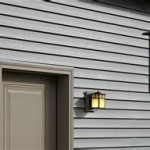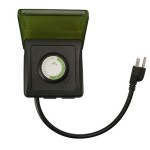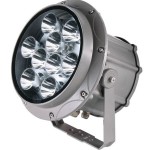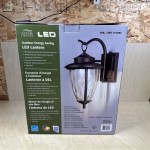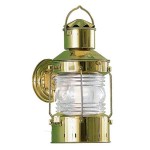Is Wicker Furniture Good For Outdoors? A Comprehensive Guide
Wicker furniture evokes images of breezy porches, sun-drenched patios, and relaxed outdoor living. However, the term "wicker" often causes confusion, particularly regarding its suitability for outdoor use. The answer to whether wicker furniture is good for outdoors depends largely on the materials used in its construction. To understand this, it's crucial to differentiate between natural wicker and synthetic wicker, and to consider the specific environmental conditions the furniture will be exposed to.
The term "wicker" refers to the weaving process, not the material itself. Traditionally, wicker furniture was crafted from natural materials such as rattan, willow, bamboo, reed, and seagrass. These materials are flexible and easily woven into intricate designs, lending themselves to the classic aesthetic associated with wicker. However, natural wicker possesses inherent limitations when exposed to the elements.
Outdoor furniture faces a constant barrage of environmental challenges, including prolonged exposure to sunlight, fluctuating temperatures, precipitation, and humidity. These factors can significantly impact the longevity and aesthetic appeal of natural wicker. Understanding these limitations is essential for making informed decisions about using wicker furniture in outdoor settings.
The Vulnerabilities of Natural Wicker Outdoors
Natural wicker, while beautiful, is susceptible to several forms of damage when left exposed to the elements. One of the most significant threats is moisture. Rain and humidity can cause natural fibers to expand and contract, leading to warping, cracking, and ultimately, structural failure. The moisture also creates an ideal environment for mold and mildew growth, which can further degrade the material and pose potential health risks.
Prolonged exposure to sunlight, particularly ultraviolet (UV) rays, can also damage natural wicker. UV radiation breaks down the lignin in the fibers, causing them to become brittle and faded. This can lead to the disintegration of the weave over time, compromising the furniture's structural integrity and aesthetic appearance. While some natural wicker furniture is treated with protective coatings, these treatments often require regular reapplication to maintain their effectiveness.
Temperature fluctuations also play a role in the deterioration of natural wicker. Extreme heat can cause the fibers to dry out and crack, while freezing temperatures can make them brittle and more prone to damage. The constant expansion and contraction caused by fluctuating temperatures put stress on the woven structure, accelerating its breakdown.
Furthermore, untreated natural wicker is susceptible to insect infestation. Wood-boring insects can tunnel into the fibers, weakening the structure and potentially causing irreparable damage. Regular inspection and treatment with appropriate insecticides are necessary to mitigate this risk.
The Rise of Synthetic Wicker: A Weather-Resistant Alternative
Recognizing the limitations of natural wicker for outdoor use, manufacturers developed synthetic alternatives. Synthetic wicker, often referred to as resin wicker or all-weather wicker, is typically made from high-density polyethylene (HDPE) or polyvinyl chloride (PVC). These materials are specifically engineered to withstand the harsh conditions of outdoor environments.
Unlike natural wicker, synthetic wicker is highly resistant to moisture. It does not absorb water, thus preventing warping, cracking, and the growth of mold and mildew. This makes it a significantly more durable option for outdoor furniture, particularly in regions with high humidity or frequent rainfall.
Synthetic wicker is also highly resistant to UV radiation. The pigments used in the manufacturing process are stabilized to prevent fading and degradation from sunlight exposure. This ensures that the furniture retains its color and aesthetic appeal for a longer period.
Another advantage of synthetic wicker is its resistance to temperature fluctuations. It can withstand extreme heat and cold without cracking or becoming brittle. This makes it suitable for use in a wider range of climates.
Furthermore, synthetic wicker is generally easier to clean and maintain than natural wicker. It can be simply wiped down with soap and water to remove dirt and debris. It is also resistant to insect infestation, eliminating the need for regular insecticide treatments.
The development of synthetic wicker has revolutionized the outdoor furniture market, allowing consumers to enjoy the aesthetic appeal of wicker without the maintenance and durability concerns associated with natural materials.
Key Considerations When Choosing Outdoor Wicker Furniture
When selecting wicker furniture for outdoor use, several factors should be carefully considered to ensure its longevity and suitability for the specific environment. Firstly, it is crucial to determine whether the furniture is made from natural or synthetic wicker. Synthetic wicker is generally the preferred choice for outdoor use due to its superior weather resistance.
Secondly, the quality of the materials used in the construction of the synthetic wicker is important. High-density polyethylene (HDPE) is a superior material to polyvinyl chloride (PVC) due to its greater durability, UV resistance, and environmental friendliness. HDPE is also less likely to become brittle or crack over time.
Thirdly, the construction of the frame is crucial. A strong and durable frame is essential to support the woven wicker and withstand the stresses of outdoor use. Aluminum frames are a popular choice due to their lightweight, rust-resistant properties. Steel frames are also durable but may require powder coating to prevent rust.
Fourthly, the quality of the weaving is important. Tight, consistent weaving ensures that the wicker is strong and resistant to unraveling. Look for furniture with well-finished edges and no loose ends.
Fifthly, consider the specific environmental conditions in your area. If you live in a region with high humidity or frequent rainfall, synthetic wicker is a must. If you live in an area with intense sunlight, choose a synthetic wicker that is specifically designed to be UV resistant.
Sixthly, consider the style and design of the furniture. Wicker furniture is available in a wide range of styles, from traditional to modern. Choose a style that complements your outdoor space and personal preferences.
Seventhly, factor in maintenance requirements. While synthetic wicker is generally low-maintenance, it still requires occasional cleaning to remove dirt and debris. Natural wicker requires more frequent maintenance, including regular cleaning, sealing, and potentially, insecticide treatments.
Finally, consider the warranty offered by the manufacturer. A longer warranty indicates that the manufacturer has confidence in the durability and quality of its product.
By carefully considering these factors, consumers can make informed decisions about choosing wicker furniture that is well-suited for outdoor use and will provide years of enjoyment.
The cushions used with outdoor wicker furniture also warrant careful consideration. Cushions should be made from weather-resistant fabrics that are designed to withstand sunlight, rain, and mildew. Solution-dyed acrylic fabrics are a popular choice due to their excellent fade resistance and durability. The cushion fill should also be water-resistant to prevent water from seeping in and causing mold or mildew growth. Consider using outdoor cushion covers for additional protection during inclement weather.
Proper storage during the off-season can also significantly extend the lifespan of outdoor wicker furniture. Covering the furniture with waterproof covers or storing it in a shed or garage can protect it from the harsh elements of winter. This is particularly important for natural wicker furniture, which is more susceptible to damage from freezing temperatures and moisture.
In conclusion, while traditional natural wicker has limitations when used outdoors, the advent of synthetic or resin wicker has provided durable and aesthetically pleasing options for virtually any outdoor setting. The key is to understand the difference between the materials and choose pieces that are well-constructed and appropriate for the specific climate and environmental conditions. Careful selection and proper maintenance will ensure that outdoor wicker furniture provides years of comfort and style.

Wicker Furniture Is Hotter Than Ever And Yes You Can Leave It Outside The Seattle Times

Wicker Furniture Is Hotter Than Ever And Yes You Can Leave It Outside The Seattle Times

Affordable Outdoor Wicker Patio Furniture An Honest Review

Home Tip Using Outdoor Furniture Indoors

Outdoor Furniture Guide 2024 Experts Share Everything You Need To Know

Affordable Outdoor Wicker Patio Furniture An Honest Review

Can You Use Wicker Furniture Outside

Is Wicker Good For Outdoor Furniture The Decor Journal

Affordable Outdoor Wicker Patio Furniture An Honest Review

31 Best Wicker Patio Sets 2024
Related Posts
